Sew A Gingerbread Ornament and Pretty Christmas Dilly Bag

Last week I added a new sewing pattern to my range; the Easter Dilly Bag. It was designed earlier in the year for the Tilda Club and it’s just been made available for release. It’s such a pretty and sweet project and I love it dearly.

But it’s hardly suitable for the festive season! So I decided it was perfect timing to sew another version of the bag in these gorgeous Liberty quilting cottons from the ‘Festive Collection’ range, thanks to Riley Blake.
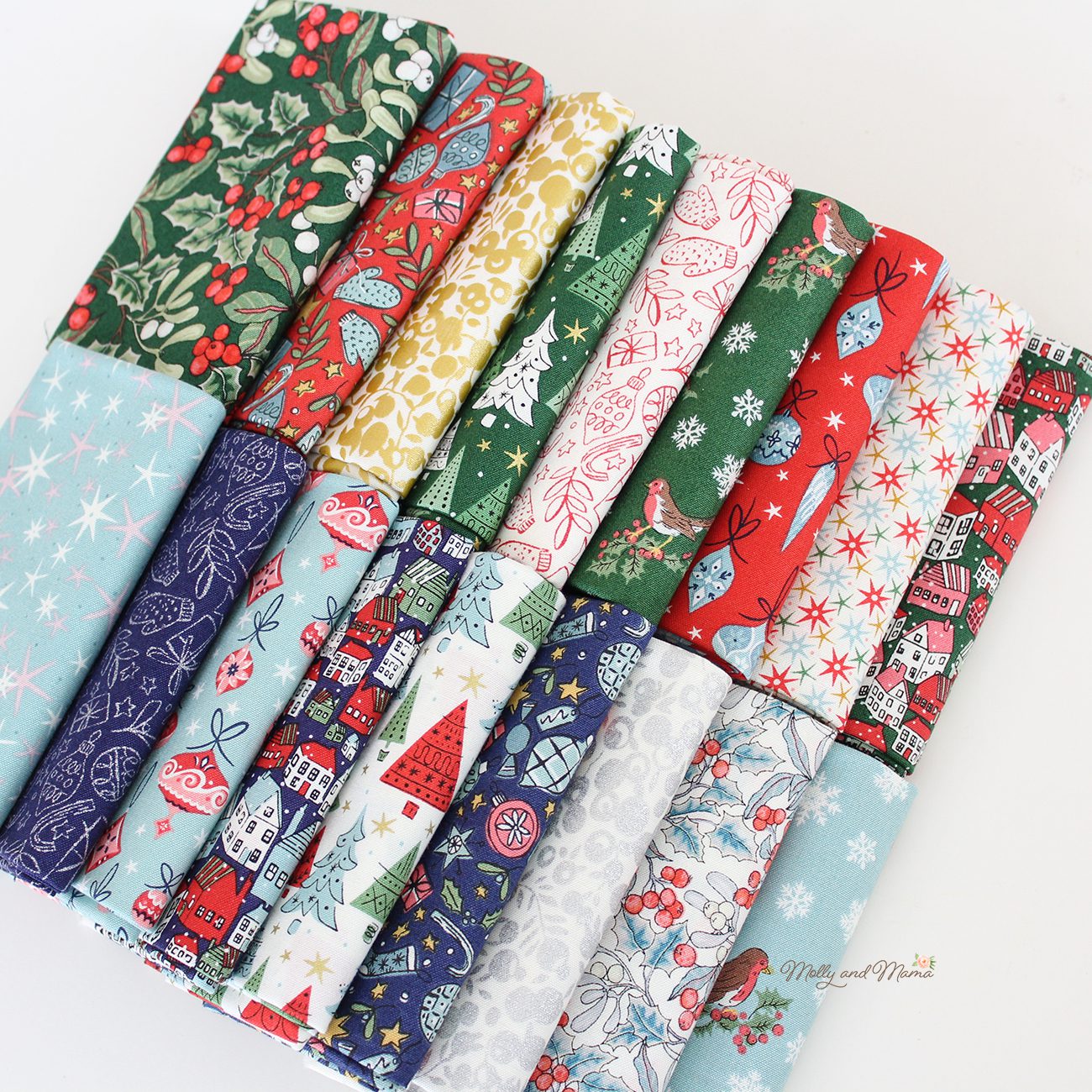
I recently used these lovely prints to create a new version of my ‘Night Before Christmas Stocking‘ pattern. You can read more about it here. But there were too many pretty left-overs just calling to be used again.
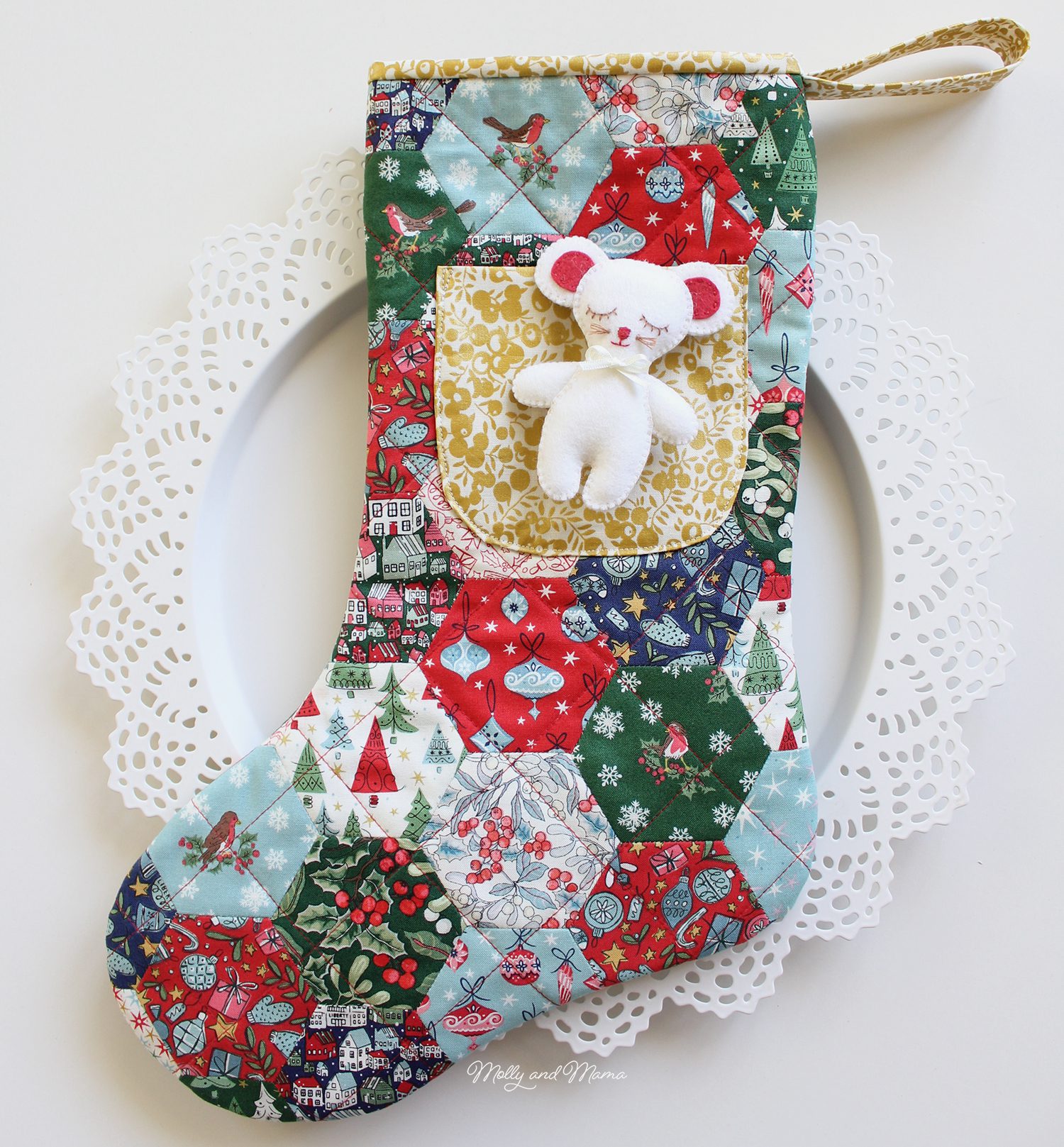
So I created the Christmas Dilly Bag by simply replacing the embroidered panel with a print fabric instead. All the other steps and instructions have been followed.
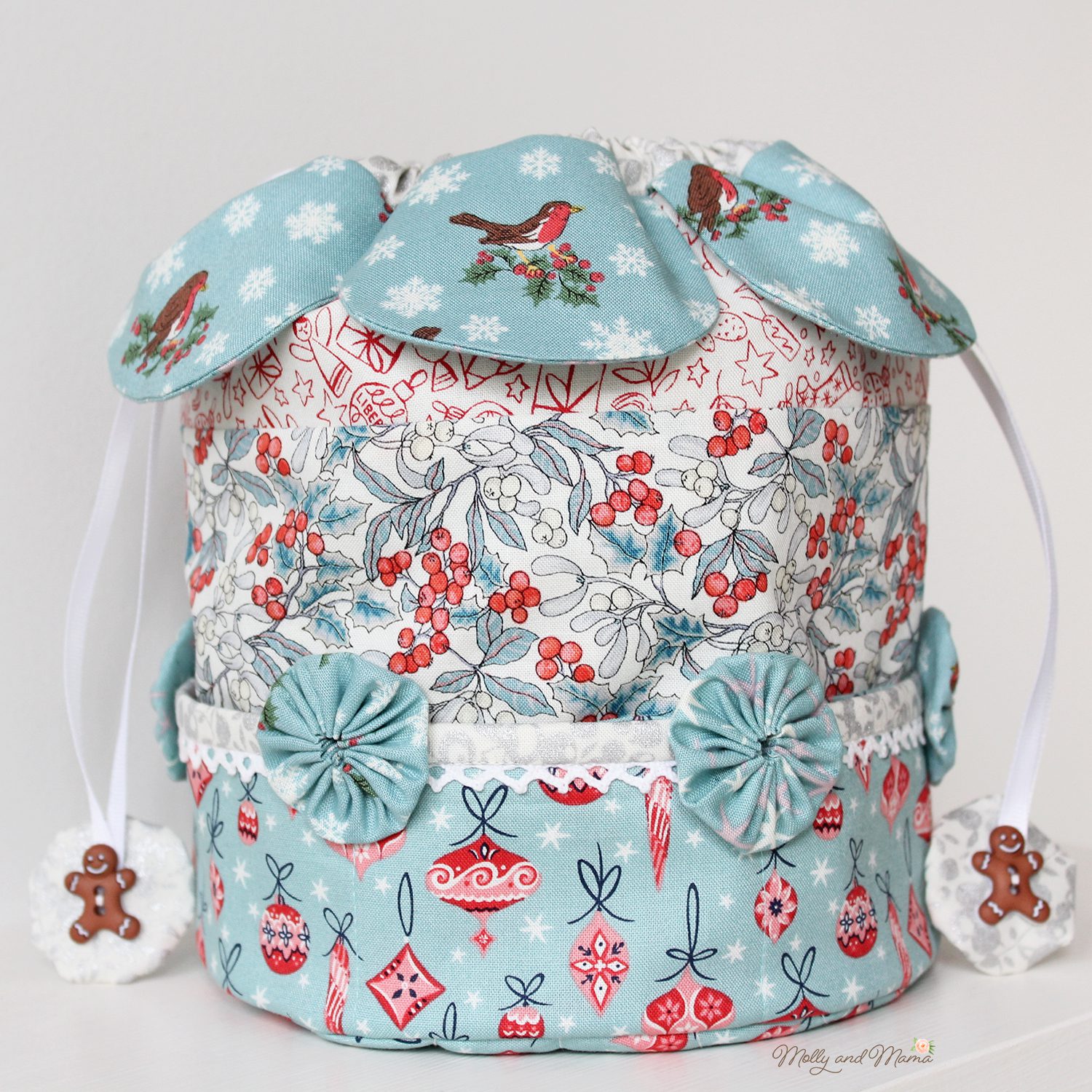
The only difference is the cute gingerbread buttons I added to the ribbon pulls!
The Easter version was designed to hold Easter eggs. And I couldn’t leave those pockets empty, so I decided to make some scrumptious little felt gingerbread ornaments for my new Christmas version. They fit perfectly in the pockets and you could also fill the bag with more. What a terrific way to give this project a Christmas makeover that was perfectly timed for the Festive Sew A Softie tutorial hop.
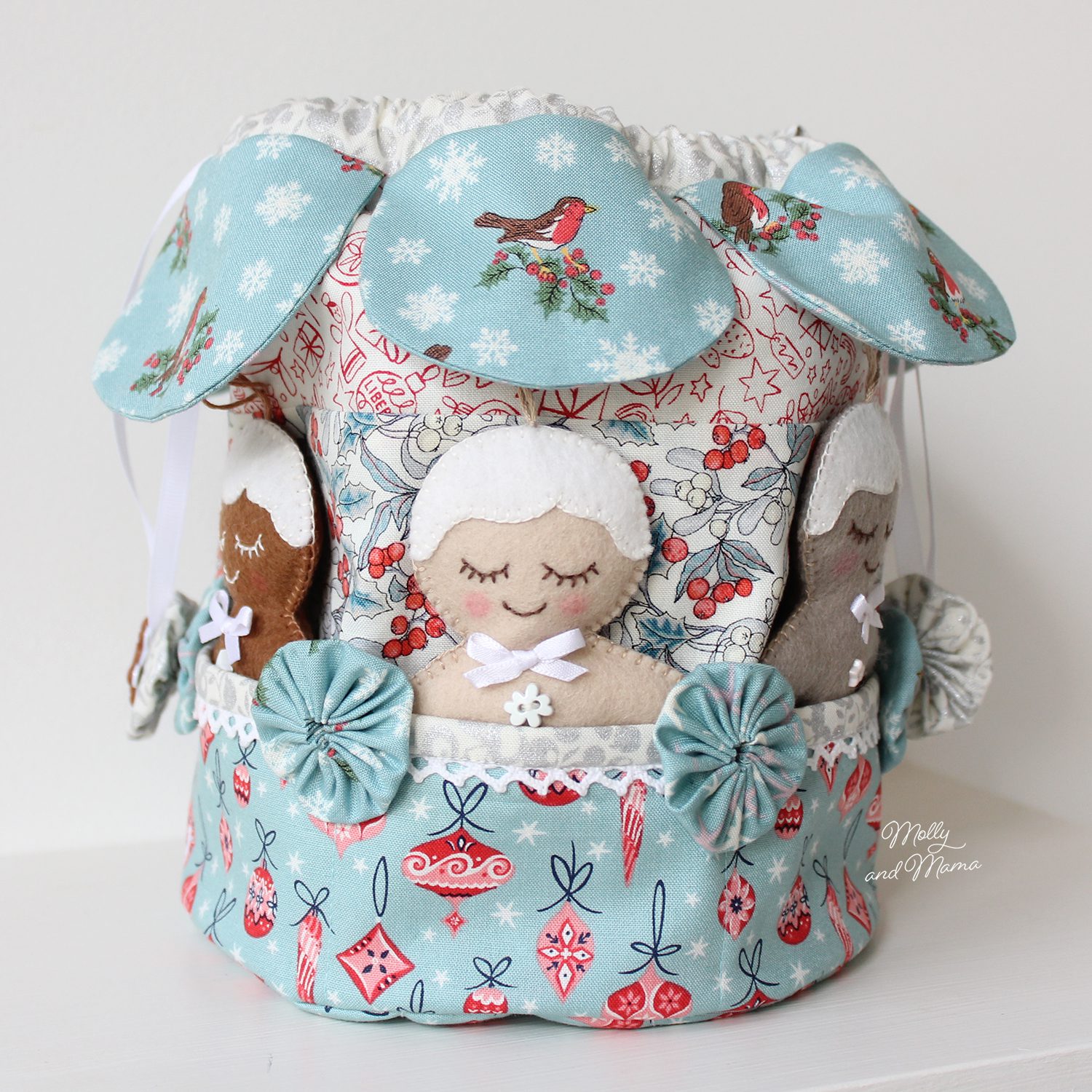
If you’d like to create your own dilly bag, please head to the store to grab an instant download pattern. Then scroll on for the full instructions to sew the gingerbread ornaments.
Make A Gingerbread Ornament!
FINISHED SIZE: These ornaments are 4 1/4″ (11cm) tall

You Will Need;
- 7″ (18cm) x 4.5″ (12cm) of gingerbread coloured felt. I love to use 100% wool felt and here’s why.
- 2.5″ (6.5cm) x 1.5″ 4cm) of cream coloured felt
- embroidery floss in gingerbread, cream and brown (I use Aurifil Cotton Floss)
- embroidery needle
- 5″ (13cm) square of freezer paper
- 2.5″ (6.5cm) square of tissue paper or fine tracing paper
- pink colouring pencil
- 6″ (15cm) narrow ribbon for a bow
- 2 small decorative buttons
- handful of polyester hobbyfill
- general sewing supplies
- print out of the template
NOTE: This project is for PERSONAL USE ONLY for sewing at home and/or teaching another person or child to sew FOR FREE. Reusing or repurposing free Molly and Mama tutorial instructions, templates and images for paid classes, or distributing the materials in classes, to groups, or for commercial purposes, without permission, is strictly prohibited. For clarification, or to seek a commercial arrangement, please contact Molly and Mama.
Let’s Get Stitching
Print out the Gingerbread Ornament Template without any scaling or cropping, then measure the 1 inch test box to ensure the template printed at the correct size. (Modify the print size by adjusting your printer settings to create gingerbread ornaments that are larger or smaller if you wish).
Use the template to trace and cut out two felt gingerbread shapes from your chosen colour, and one hair piece from the cream felt. I made three different versions, each in a different shade of beige / brown. Use your preferred method or visit this blog post that explains the Freezer Paper Method I use. I trace the shapes onto freezer paper, iron the shapes onto the wool felt and then cut out the templates on the line. This gives very accurate results and the templates are reusable.
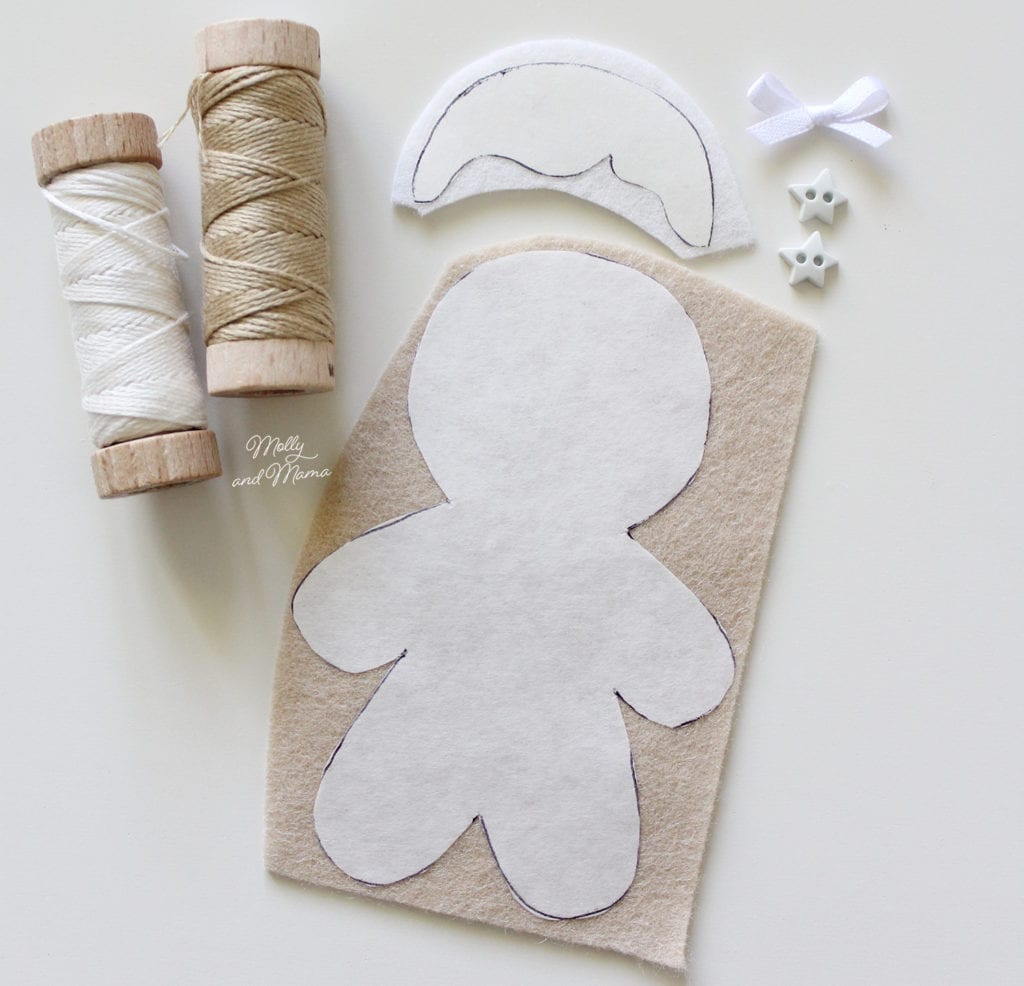
Here are my felt shapes ready for assembly.
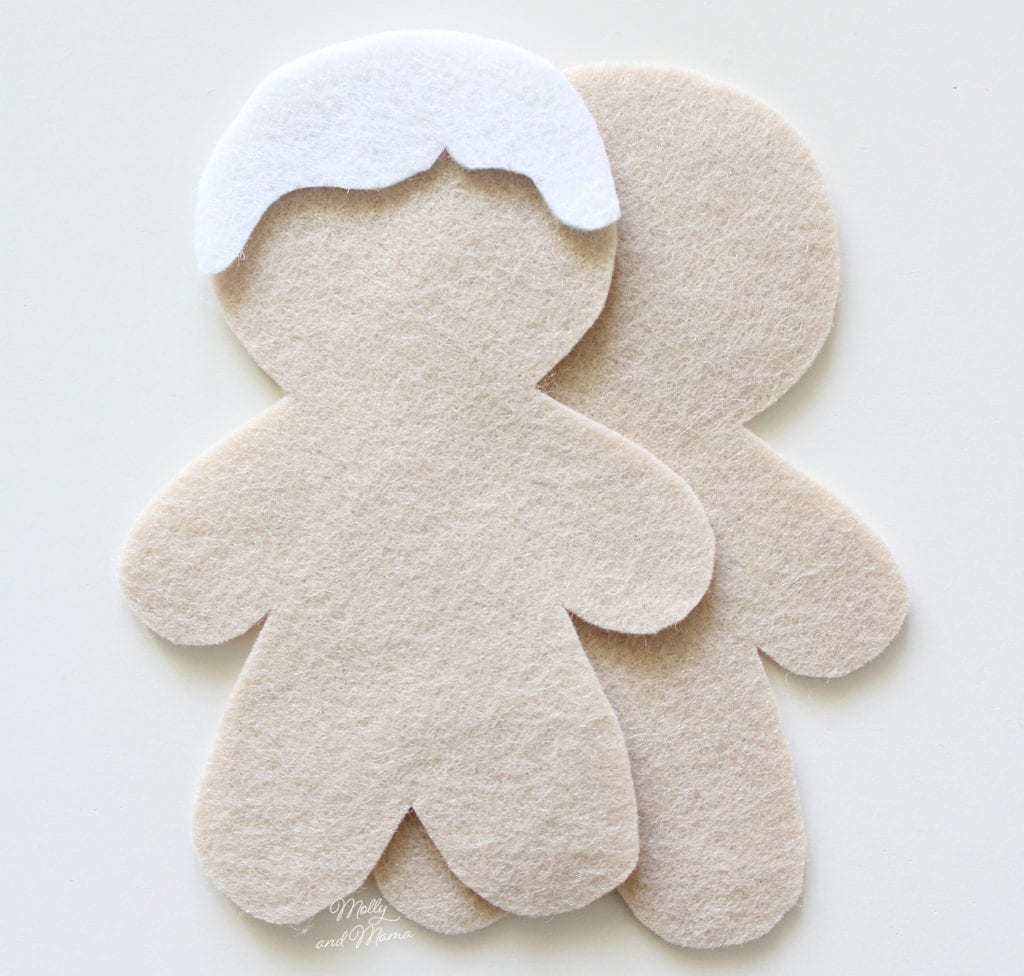
Place the hair piece over the top of one of the gingerbread shapes and pin or clip in place (putting the second gingerbread shape aside).
Using two strands of embroidery floss, blanket stitch the hairline only (the fringe or bangs) in place, across the felt. For more tips on Blanket Stitch visit my Beginner’s Stitch Tutorial.
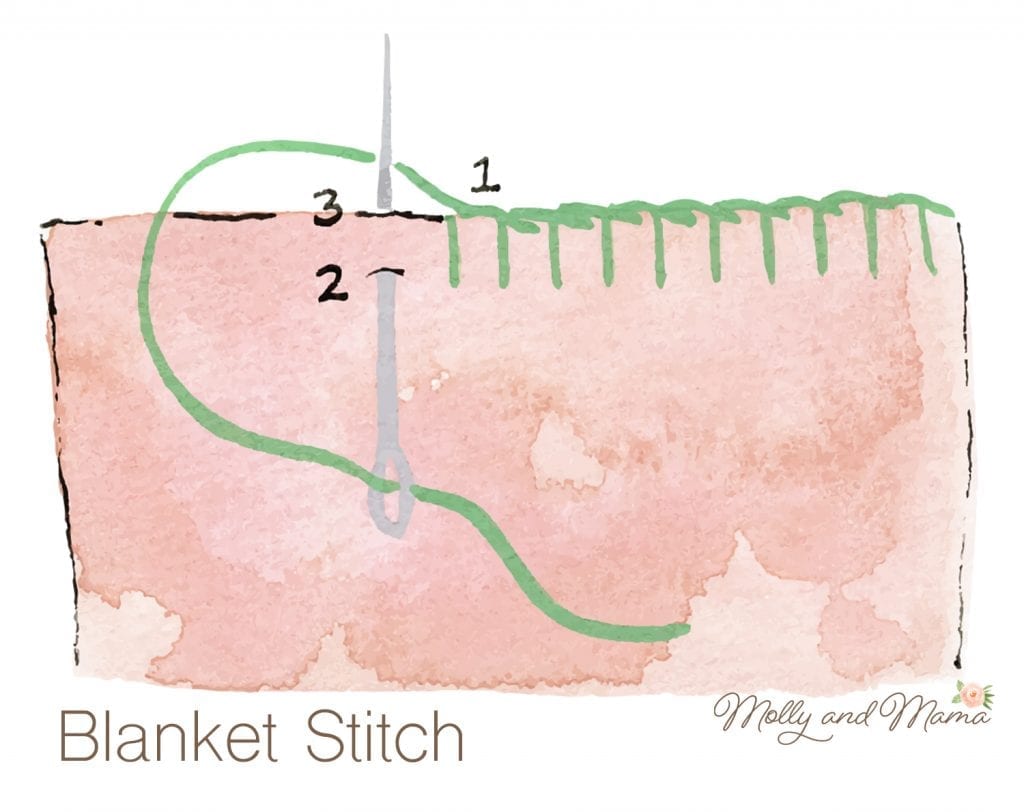
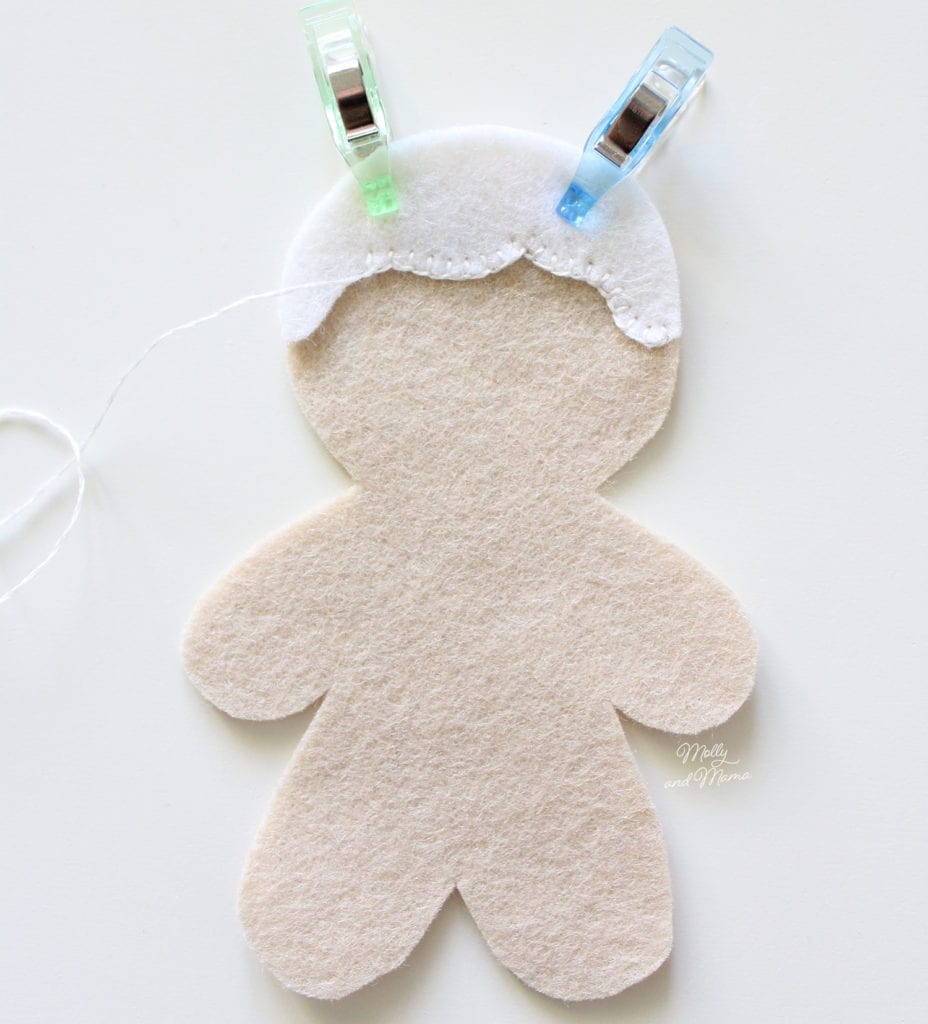
When you reach the other side of the head, finish off your stitching (hiding the floss tail on the underside of the felt).
Now trace the face and hair shapes and the facial embroidery details onto tracing paper. Cut out the paper around the head shape and then pin or clip this over the gingerbread shape (lining up the hair line and shoulder notches). You can read more about using this method for transferring embroidered details to felt HERE.
Using two strands of contrasting floss, back stitch directly through the tracing paper to create an accurate stitch line for the eyes and mouth.
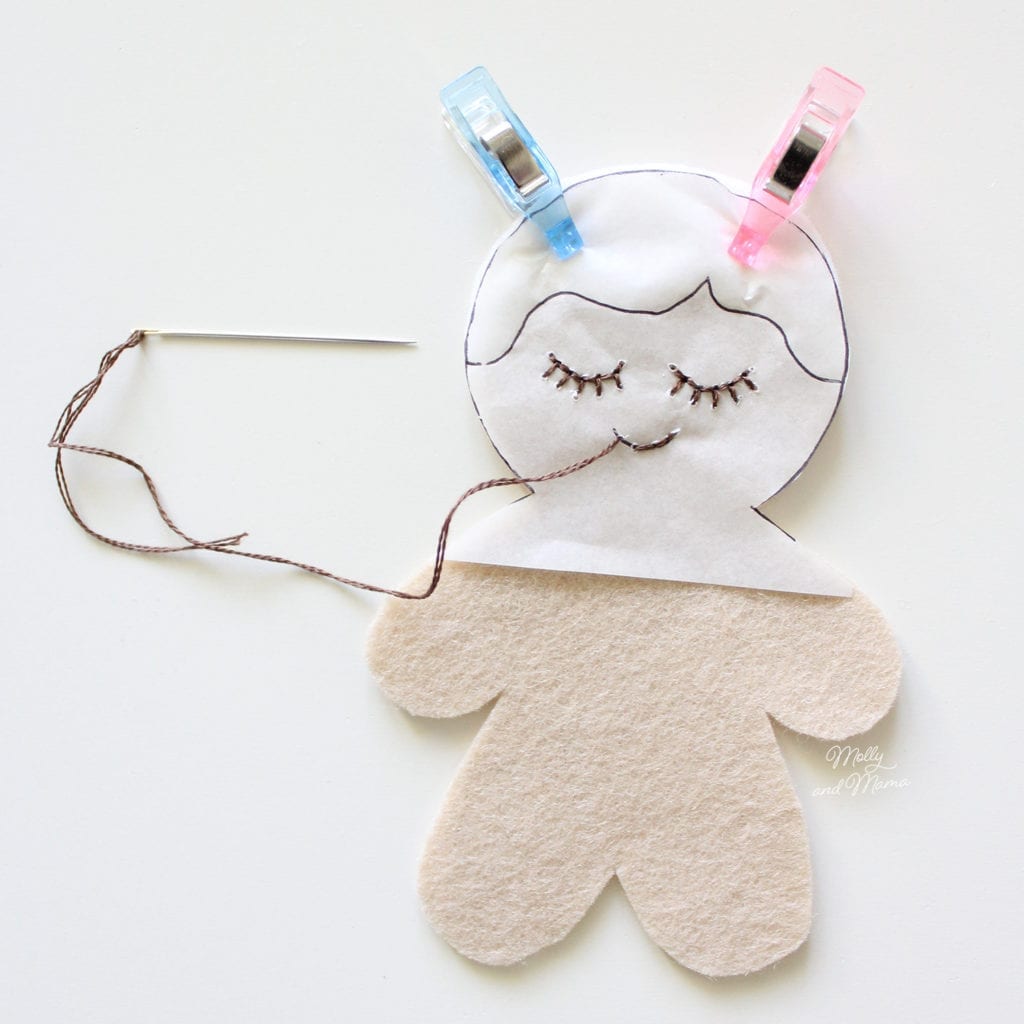
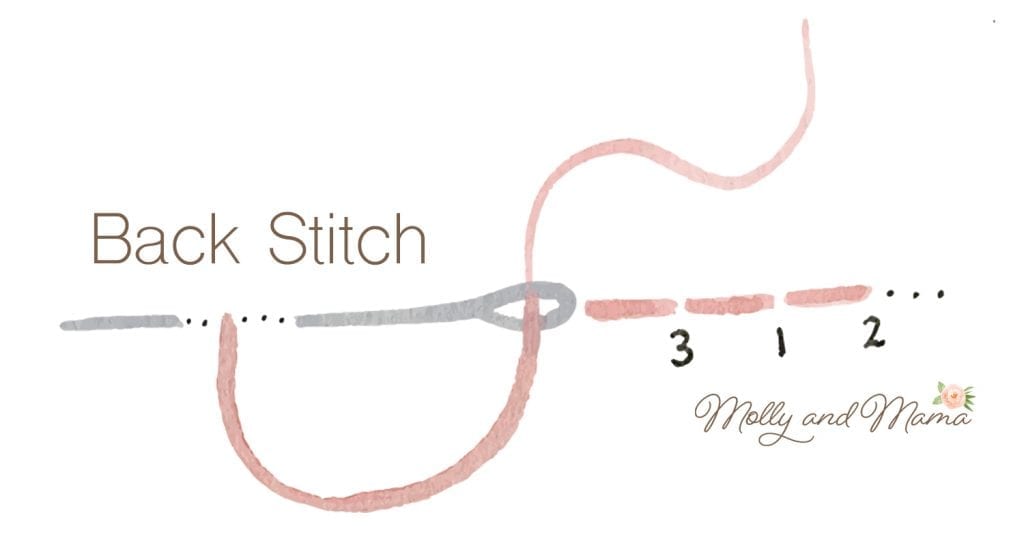
Once complete, hold the stitches while gently tearing the paper away. Use a needle to tease out any stray bits of paper.
Using the template as a positioning guide, colour in some cheeks on the gingerbread face using a pink colouring pencil.

Tie a tiny bow and heat seal the ends with a lighter so that they don’t fray. Sew the bow at the gingerbread’s neck. Then sew two decorative buttons below that. Your gingerbread top is complete. Now it’s time for the assembly!
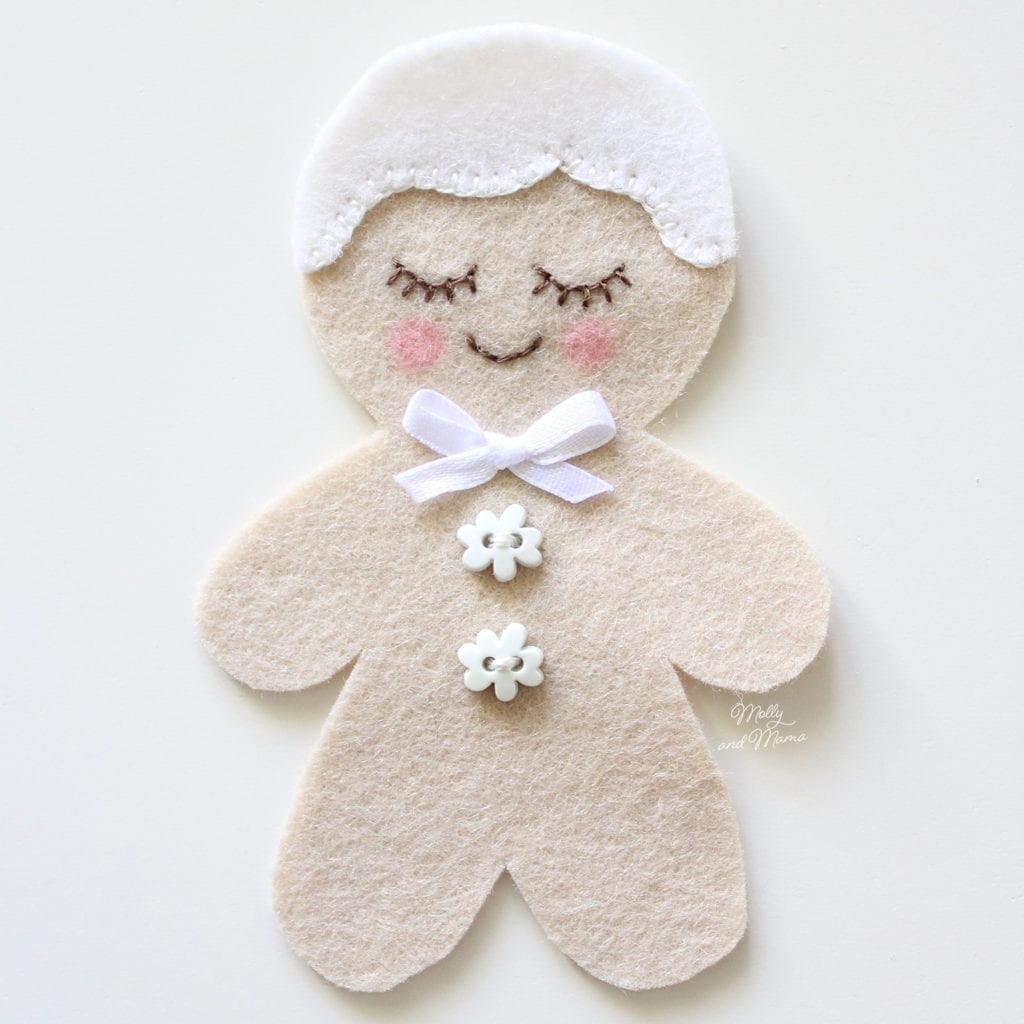
Place the second gingerbread felt shape behind the one we’ve just stitched, and pin or clip them together. Rethread your needle with two strands of cream floss. Starting at one side of the head, hide your knot inside the seam then blanket stitch around the outside of the head shape from one side, across the top, to the other side. Be sure to catch the second gingerbread head shape in the stitches. Finish your stitching and hide the floss tail.
Cut a length of gingerbread coloured floss about 5″ (12.5cm) long and knot one end with a double knot. Thread the looped end onto a large eyed needle.

Open the gingerbread shapes and insert the needle inside between them, right through the stitches at the centre top of the gingerbread’s head and out through the other side. Pull the thread until the knot stops the loop from coming through.

Unthread the needle. Wasn’t that a great way to add a hanging loop?
Use two strands of floss to blanket stitch the entire ornament together. Start at one side of the head (where the cream stitching ends). Sew down the face, around one arm, and one leg, to the start of the second leg.
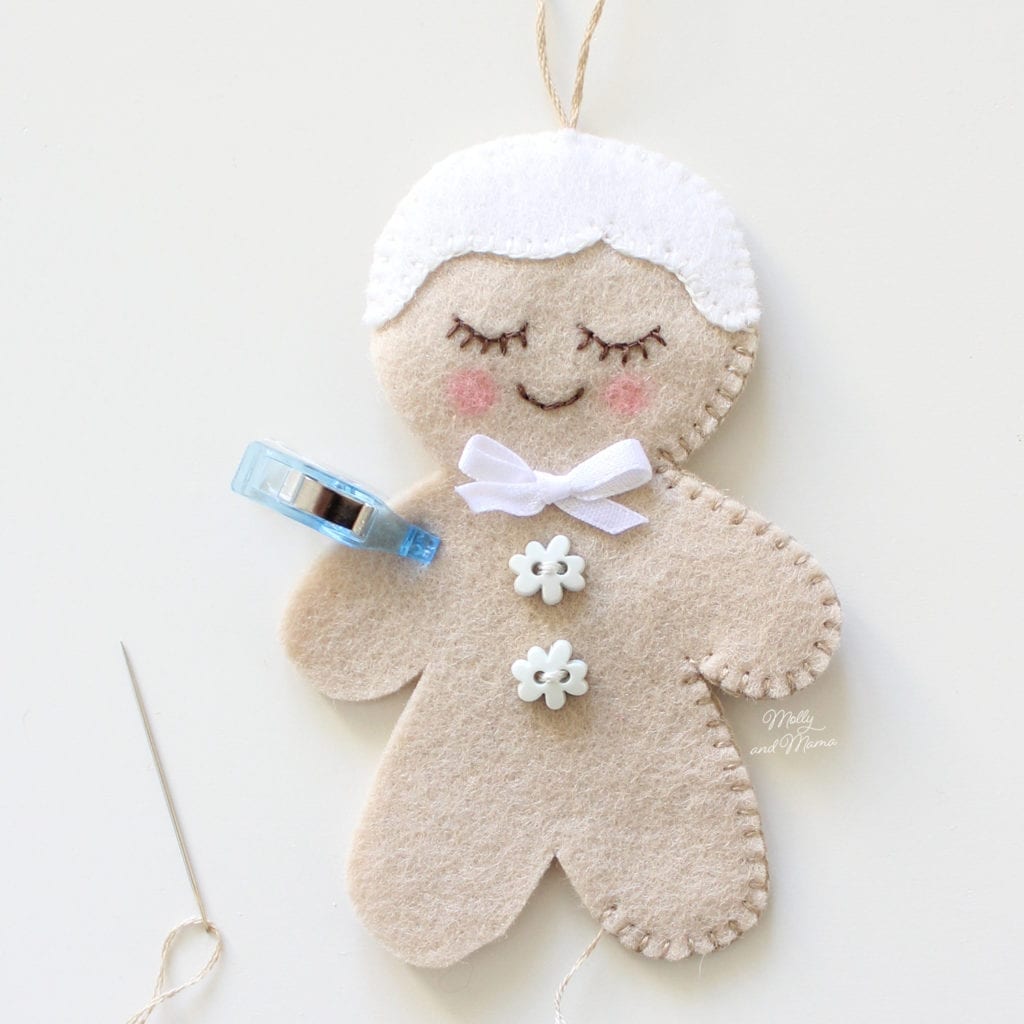
Start to insert very small amounts of balled up polyester hobbyfill inside the shape, using a chop stick or similar tool to manoeuvre the filling in place.
Fill the second leg and second arm after each one is stitched. Then fill the body and head before completing the blanket stitch and sealing the ornament closed. Your gingerbread is now done!
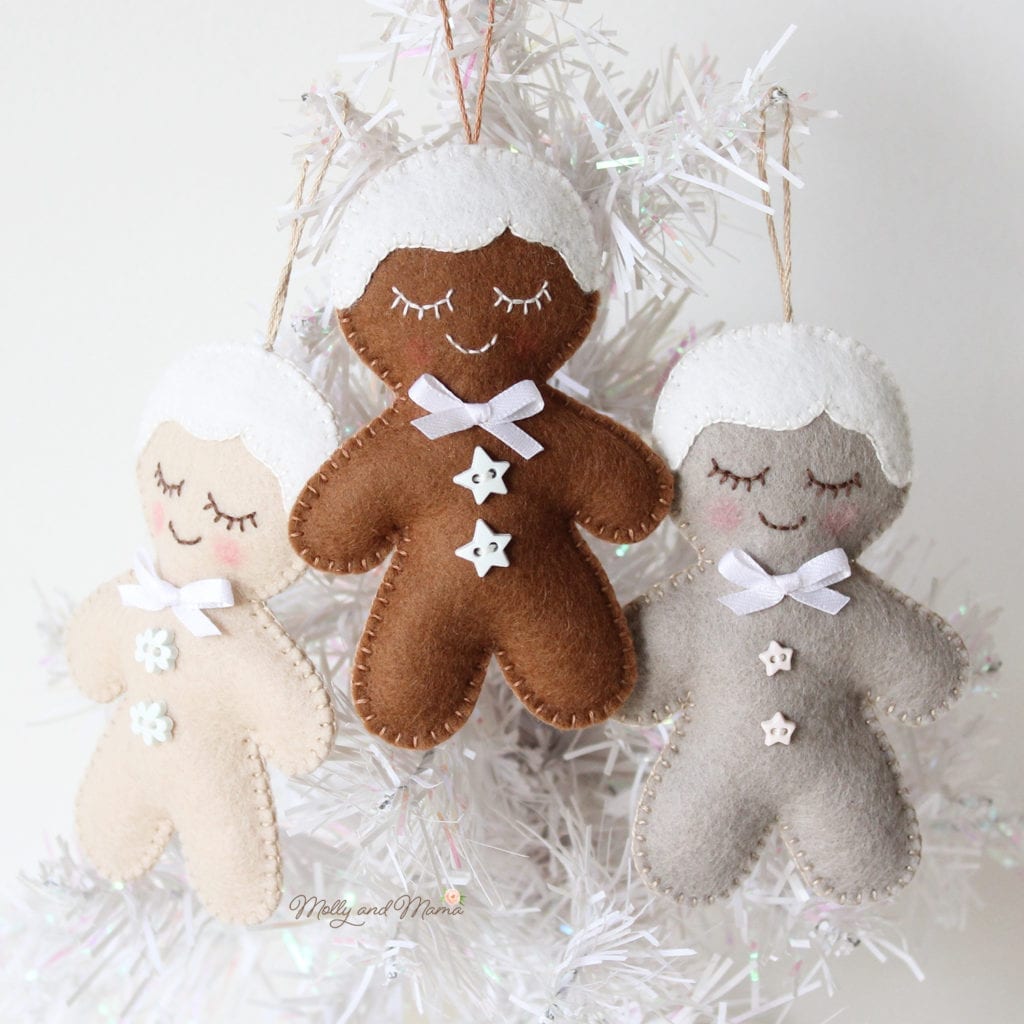
Pop the ornaments into the bag pockets for a cute Christmas storage idea!
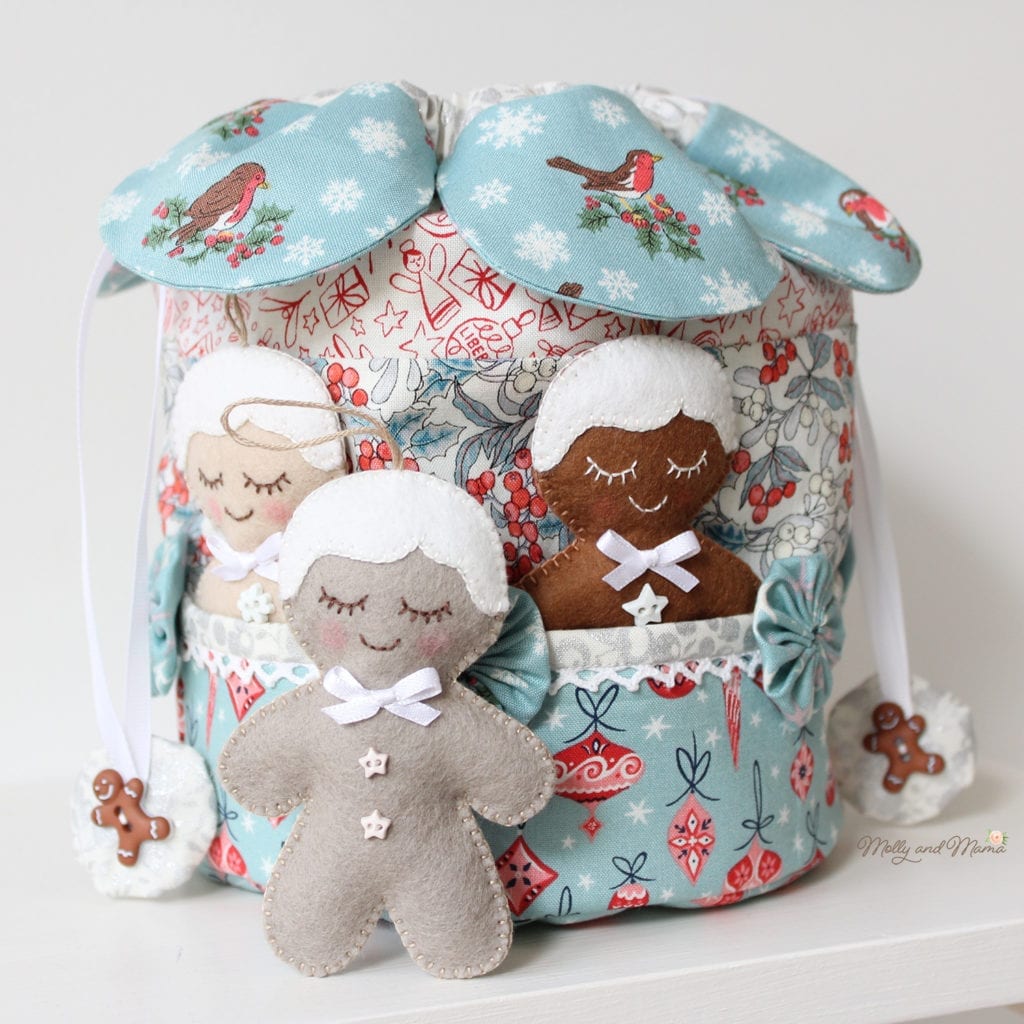
I really hope you’ve enjoyed this tutorial. Perhaps you’d like some of my other Christmas projects too. This Christmas Angel ornament would be sweet paired with the Gingerbread, that’s for sure!

If you’ve enjoyed working with this wool felt, you might like my other felt projects too. Just head to the store to see more!
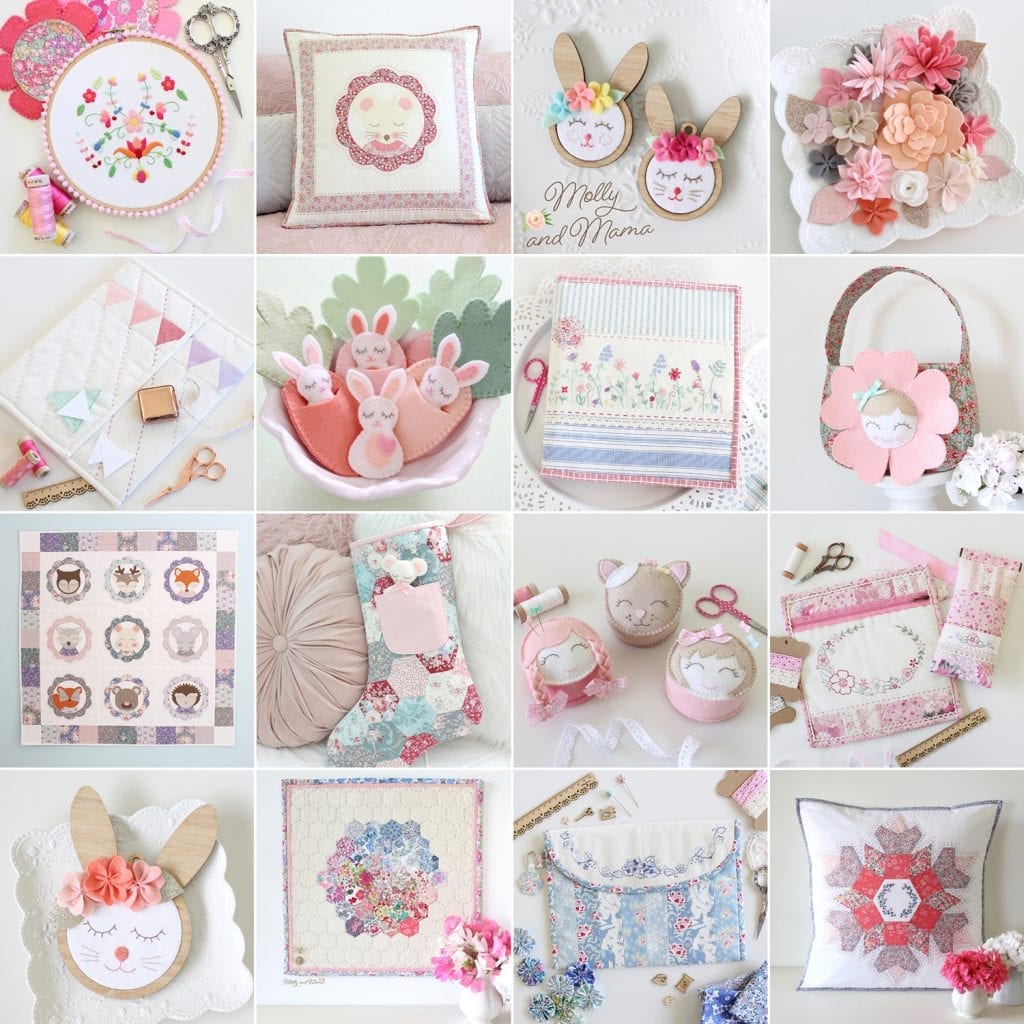
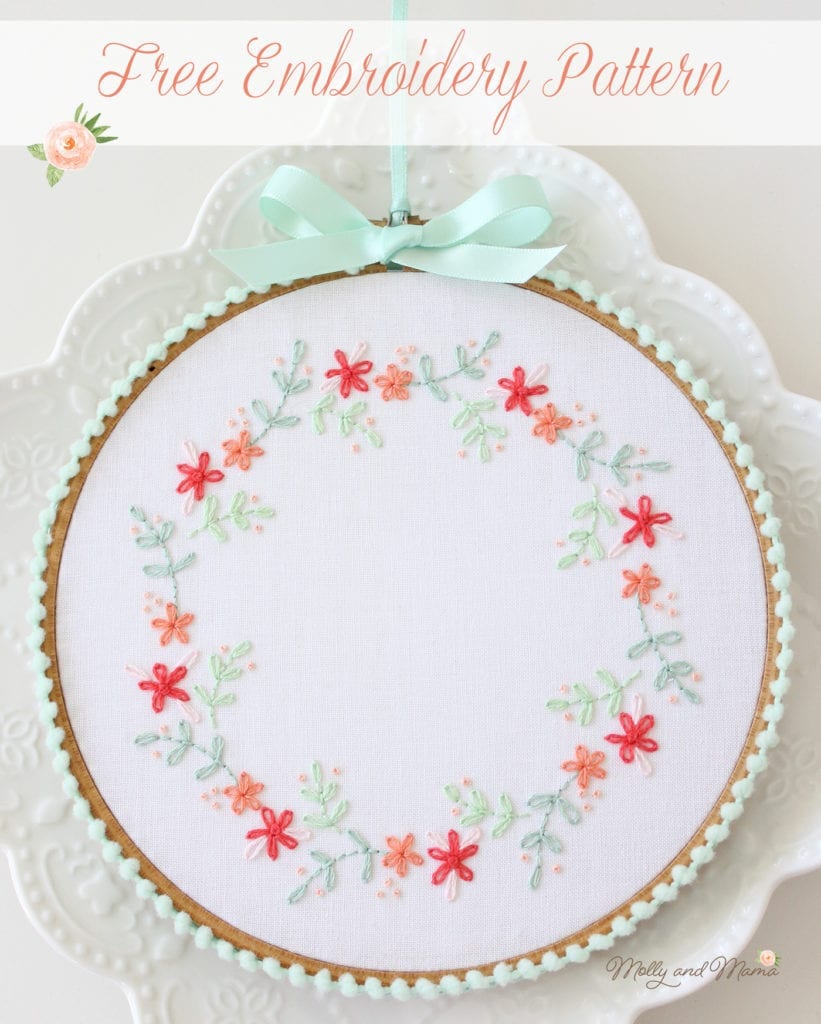
Thanks for being here. I’d love to invite you to sign up for my newsletter so that you’ll receive links to these sorts of free projects and more, straight into your inbox. Get this free embroidery pattern available when you sign up too!
Happy stitching, Lauren x


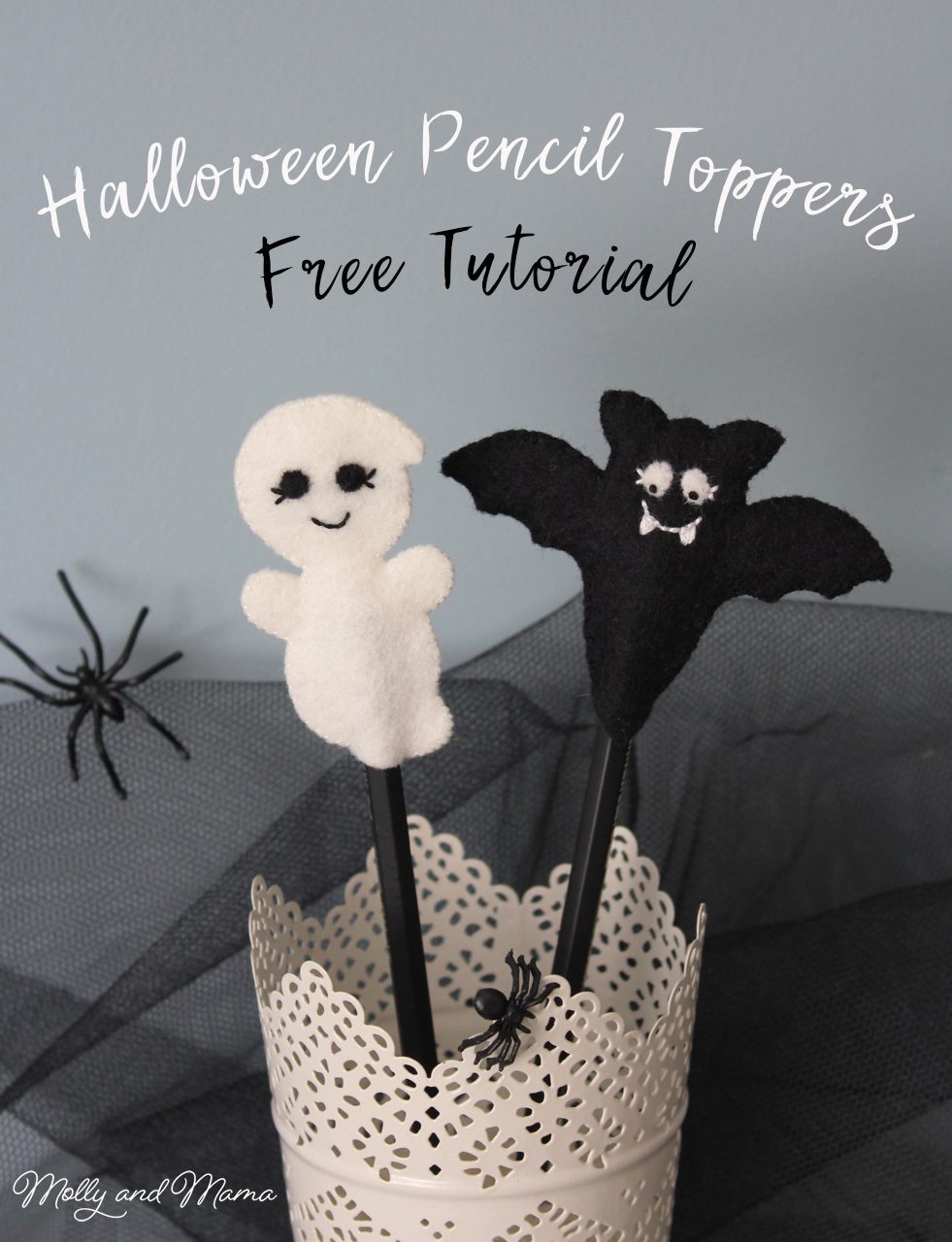


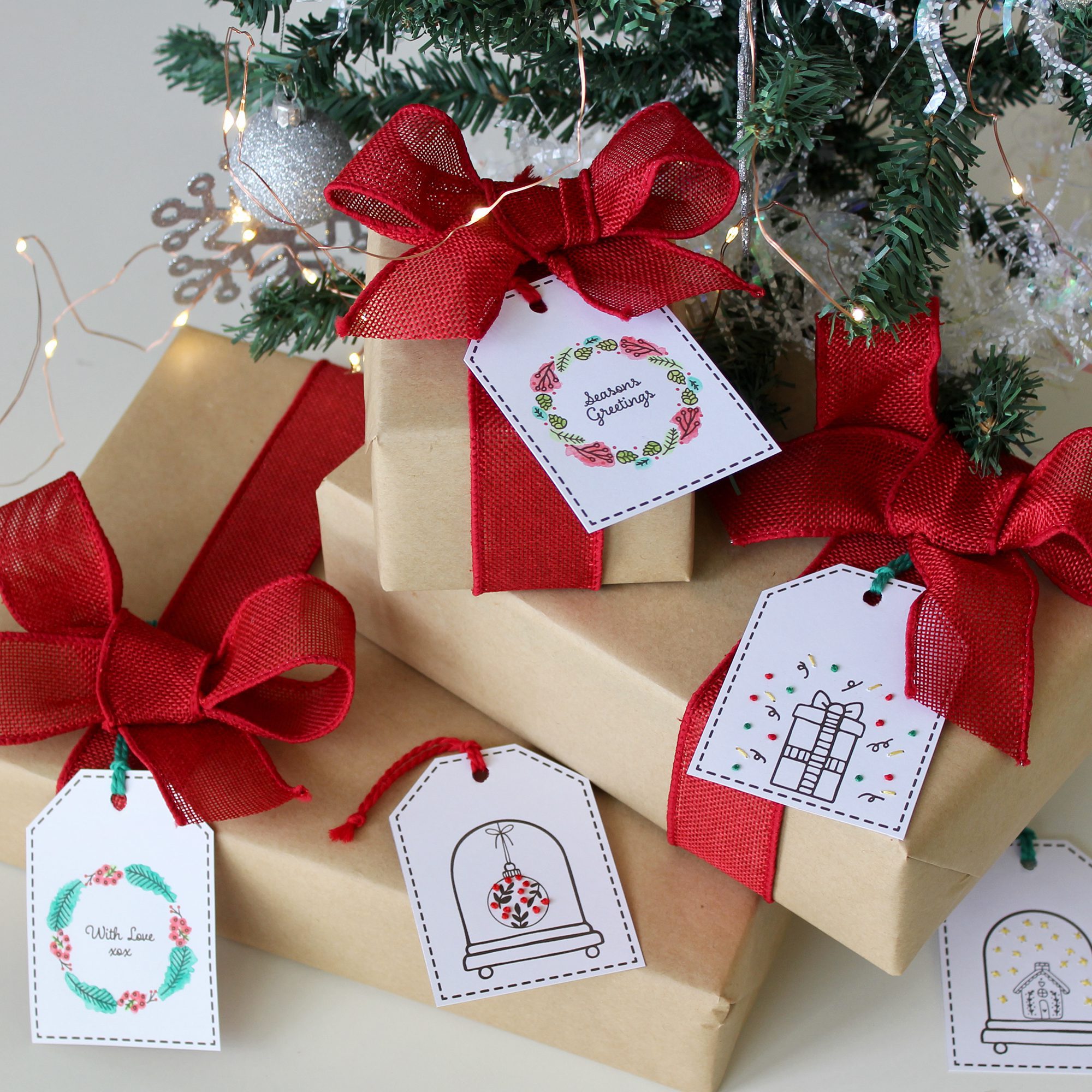
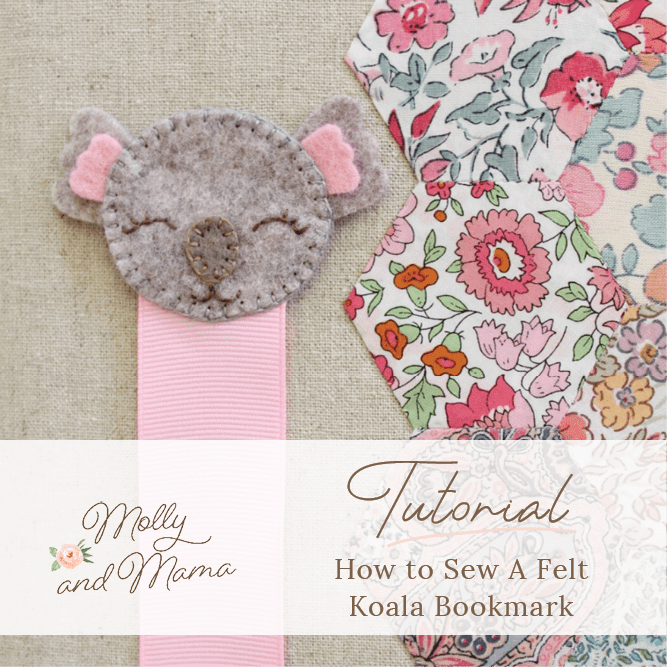
Gracias por compartir!!!
I have to buy wool stuffing online (no synthetics for me), and it’s sold in grams. How much goes into a normal sized decoration? Don’t want to buy 100g and not be able to make more than one or two ornaments, but also don’t want to buy 500g and never be able to use it all. Googling hasn’t given me any indication at all, everything just says buy a bag and start stuffing.
Hi Mchelle, Great question! I use a handful of polyester fill which weighs about 10 grams. You really don’t need much at all. If you can use cotton, I would suggest using cotton wool balls. Just unroll them and plump them out before use. Alternatively, you could even stuff the gingerbread with cut up fabric or wool felt scraps. I hope that helps. Best of luck, Lauren.
I never thought of using cotton wool balls, thanks so much for your reply Lauren 🙂
These are adorable! I know what I am doing with the rest of my Sunday.
Thank you! Enjoy stitching them up.